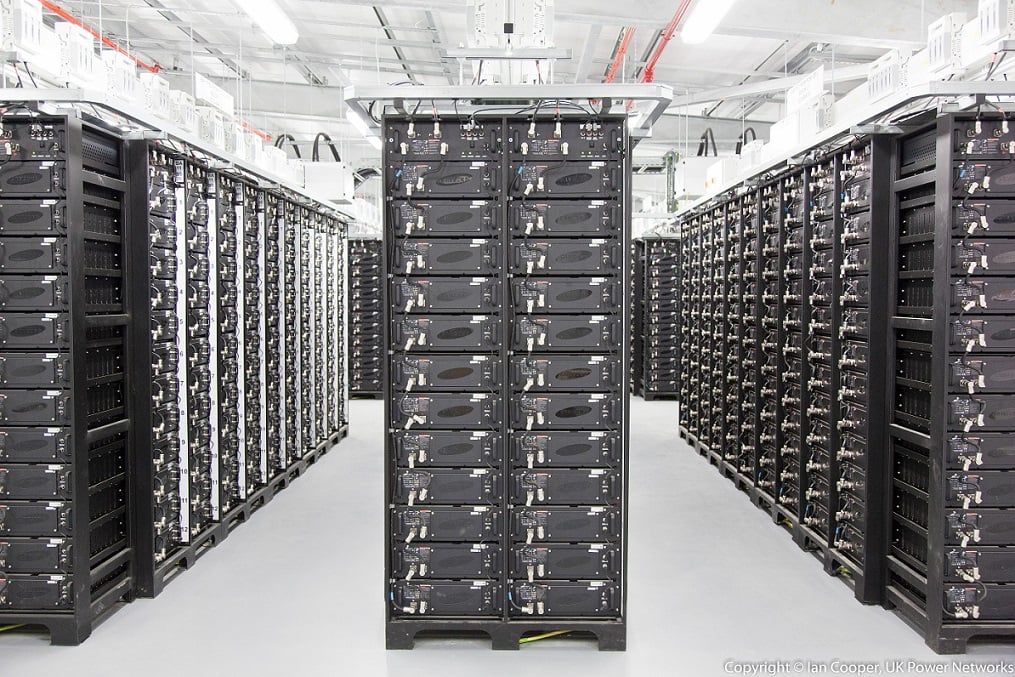Ofgem has said it will provide “regulatory certainty” for storage projects after setting out its plans for amendments to the electricity generation licence to make it fit for electricity storage to take effect as early as the first half of 2018.
In a consultation open until 27 November, the regulator also proposed plans to allocate the cost of final consumption levies on storage “fairly” by setting a requirement to export as a “primary function” when operating a storage facility.
In July Ofgem alongside the Department for Business, Energy and Industrial Strategy (BEIS) published the long-awaited Smart Systems and Flexibility Plan which sought to address many of the barriers holding back storage deployment.
The regulator has now taken the first step with plans to amend the existing electricity generation licence placed to clarify the regulatory framework for storage. It judges that generation and storage share similar characteristics and perform similar functions in terms of generating and exporting electricity to the grid, making modification of the current licence is the most practical way of providing regulatory clarity.
While the consultation does ask for views on creating a similar but separate licence for storage, Ofgem states that this approach “would add unnecessary confusion” as the majority of licence conditions that apply to generation would apply to storage as well.
Acting within existing legislation would also speed up the process of implementing the changes, which Ofgem says could be done within a shorter timeframe, going live in less than a year.
Defining storage in legislation
As part of the modification, a definition of storage would be placed within the current licence following BEIS’ thinking that the Electricity Storage Network’s definition would be the most appropriate.
This defines electricity storage in the electricity system as the conversion of electrical energy into a form of energy which can be stored, the storing of that energy, and the subsequent reconversion of that energy back into electrical energy, with an electricity storage facility defined as where this takes place.
“The definition of storage provided by the ESN strikes the right balance for primary legislation, and we intend to use it as the basis for defining storage in industry codes, the generation licence and eventually legislation,” the consultation states.
Ofgem adds that the same licence exemption regime for electricity generation would be applied to storage. Like generation, storage with capacity below 50MW (or up to 100MW with the approval of the secretary of state) could be licence exempted.
However, where storage obtains an exemption to the requirement to hold a licence, storage would be subject to final consumption levies (FCL) as the meter point will need to be registered with a supplier in order to import/export electricity.
Removing double charging for electricity storage
However Ofgem has also moved to counter another of the key barriers to storage, namely how FCLs are applied. Currently storage facilities have to pay these costs – specifically the Renewables Obligation, Feed-in Tariffs, Contracts for Difference and the Capacity Market – on imported energy.
These costs can make up a significant additional cost for storage, which storage should not be required to pay if they are not the end consumer of the imported electricity Ofgem says.
It is therefore proposing a new licence condition ‘Condition E1’ that requires the primary function of the storage facility to export electricity back to the distribution system or to the national electricity transmission system.
It says this would prevent the storage facility from being the ‘end consumer’, thus avoiding paying the FCL costs. However, if the storage facility’s primary function is not to export to the distribution or transmission system, then such facility will not be classified as storage for regulatory purposes and would be subject to final consumption levies.
This raises questions around how such a primary function would be defined and how it would work in practice for a system that provides multiple functions to both the grid and the asset owner.
However, Ofgem states that ‘primary function’ could be defined in many ways, such as by the electricity exported to the grid vs consumed on-site, by the length of time a storage facility is deployed for injecting electricity back to the grid, by the type and ‘criticality’ of services provided.
“The phrase ‘primary purpose’ aims at capturing the wide spectrum of services that electricity storage could provide and the diverse business models underpinning them,” the consultation claims. However, further views on the specifics of this measure are being sought.





